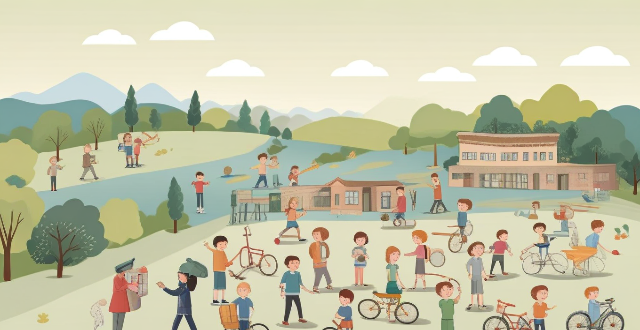The article discusses ways in which educational institutions can improve their earthquake preparedness plans, including conducting regular drills, training staff and students on preparedness, strengthening building structures, developing an emergency communication plan, and collaborating with local authorities and organizations. By implementing these strategies, schools and universities can ensure the safety of their communities during potentially devastating natural disasters.

How Can Schools and Universities Improve Their Earthquake Preparedness Plans?
Introduction
Earthquakes are unpredictable natural disasters that can cause significant damage to buildings, infrastructure, and communities. Schools and universities must be prepared for such events to ensure the safety of students, staff, and faculty. In this article, we will discuss ways in which educational institutions can improve their earthquake preparedness plans.
Key Points
1. Conduct regular earthquake drills
- Schedule regular drills: Schools and universities should schedule regular earthquake drills throughout the academic year.
- Involve all stakeholders: Students, staff, and faculty should participate in these drills to familiarize themselves with emergency procedures.
- Review and update drills: After each drill, review the effectiveness of the procedures and make necessary updates.
2. Train staff and students on earthquake preparedness
- Provide training sessions: Offer training sessions on earthquake preparedness, including how to identify safe locations and evacuation routes.
- Teach self-protection techniques: Teach students and staff self-protection techniques, such as "Drop, Cover, and Hold On."
- Encourage community involvement: Encourage parents and local communities to participate in training sessions.
3. Strengthen building structures
- Conduct structural assessments: Regularly assess the structural integrity of buildings to identify potential weaknesses.
- Retrofit buildings: Retrofit buildings to improve their ability to withstand earthquakes, such as reinforcing walls and foundations.
- Install seismic dampers: Install seismic dampers or other advanced technology to reduce the impact of earthquakes on buildings.
4. Develop an emergency communication plan
- Establish communication channels: Establish clear communication channels for disseminating information during emergencies.
- Create a multi-platform approach: Use various platforms, such as social media, email, and SMS, to reach a wider audience quickly.
- Maintain contact lists: Maintain up-to-date contact lists for students, staff, and faculty to ensure timely communication.
5. Collaborate with local authorities and organizations
- Partner with emergency services: Partner with local emergency services to develop joint response plans.
- Engage with community organizations: Engage with community organizations to share resources and knowledge about earthquake preparedness.
- Attend conferences and workshops: Attend conferences and workshops focused on earthquake preparedness to stay informed about best practices.
Conclusion
By implementing these strategies, schools and universities can significantly improve their earthquake preparedness plans, ensuring the safety of their communities during potentially devastating natural disasters. It is essential for educational institutions to prioritize earthquake preparedness and continuously update their plans based on new research and technologies.